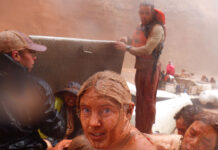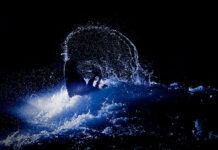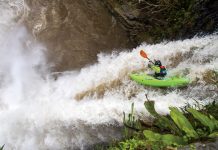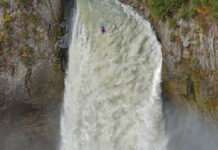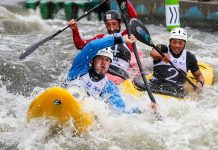I learned to kayak in a hand-me-down lifejacket and a skateboard helmet. Surrounded by stubby playboats, I took my first strokes in whitewater from the seat of an old Perception kayak. My uncle spent the day teaching me strokes, safety and how to read the water. I spent more time upside down than right side up. I soaked up the challenge and thrill, the atmosphere and camaraderie. I was hooked.
That simple afternoon on the water led me into a sport that has shaped my life—from my friends and work to where I choose to live. I want as many people as possible to have the chance to see the world from the seat of a kayak, but it’s not an easy sport to break into.
With entry-level paddles priced around $150, basic skirts and PFDs in the $200-range and quality helmets pushing $100, the odds of a newbie making the investment before trying the sport and knowing they’re hooked is incredibly low. Add to that the base layers, insulation, drywear, booties and gloves that take us from just-hanging-in-there to oh-so-comfortable.
Learning to swim and read rapids, being confined in a small boat, negotiating moving water and spending time inverted underwater add more obstacles to an already daunting path.
Donating gear and donating time are two simple ways we can break down those barriers and share the whitewater love. These are valuable in any activity but especially in a sport like kayaking where the initial gear investment is high and the learning curve steep.
When you lend someone gear—even if it’s just that dusty old paddle in your garage—you present them with an opportunity. And by lending your time and experience, you can give someone tools to stay safe and to progress and improve.
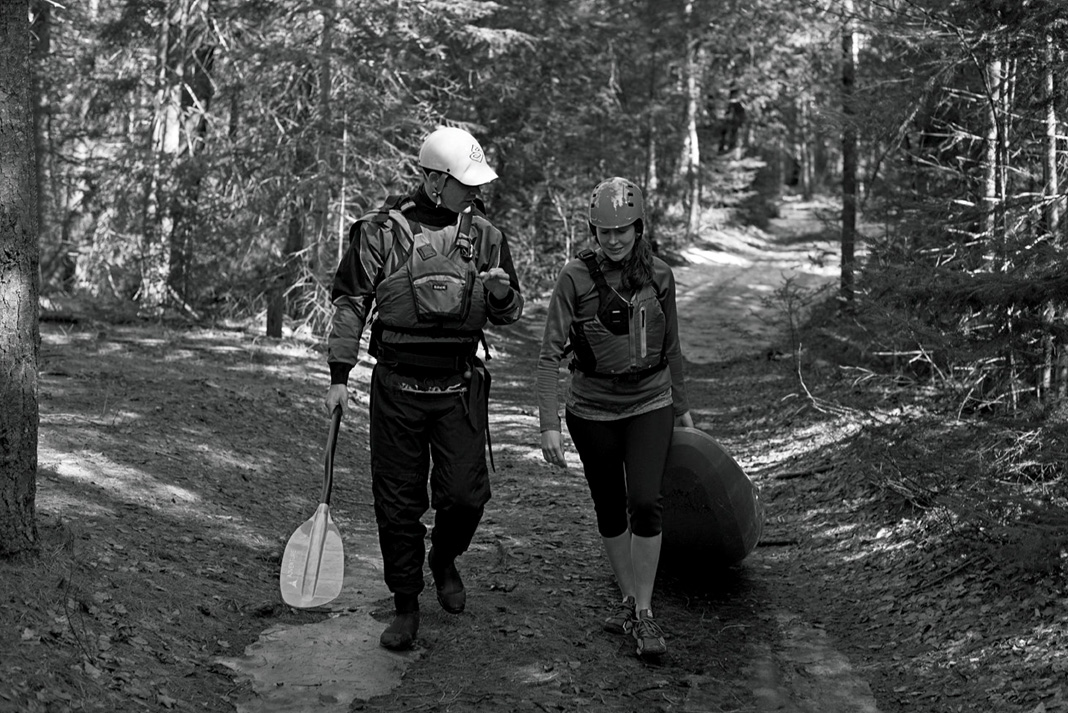
I have had many whitewater teachers over the years and have often felt like I was paddling with a gang of big brothers—people who have my back no matter what. I owe my addiction to the whitewater and my place in such a supportive community to my uncle who passed on his love of paddling.
Some pro paddlers have taken this pass-it-on idea one step further. Mexican waterfall ninja Rafa Ortiz is working with his sponsors to develop whitewater kayaking in indigenous communities in Mexico’s Chiapas province.
“I believe that through kayaking, we can make peoples’ lives better,” says Ortiz in a short film about the project.
Ortiz and his friends are providing boats and other equipment to local kids and spending time teaching them the basics. They weren’t surprised to find that children who live near whitewater naturally develop skills in the current. Kayaking offers prospects to these kids and their communities—it can open doors to travel, sport and tourism. For them, like myself and so many others, learning to kayak could be life changing.
“Kayaking has expanded my horizons,” says Ortiz. “It has changed my life and it could change theirs, so why not share it?”
Carmen Kuntz is a regular Rapid contributor. Currently, she’s paying it forward by organizing the Juanito de Ugarte Memorial Scholarship that pays for Peruvian youth to attend kayak camps. Learn more at www.juanitoscholarship.com.
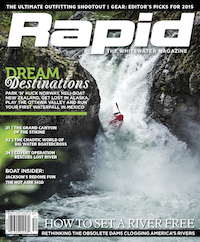 This article first appeared in the Early Summer 2015 issue of Rapid Magazine.
This article first appeared in the Early Summer 2015 issue of Rapid Magazine.
Subscribe to Paddling Magazine and get 25 years of digital magazine archives including our legacy titles: Rapid, Adventure Kayak and Canoeroots.



